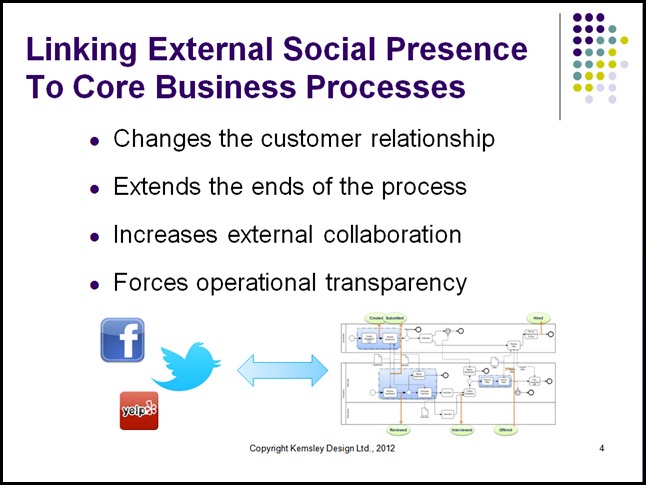Another week, another conference. Instead of 9,500 people in Las Vegas at IBM Impact, however, this week I’m amongst a group of about 200 in the outskirts of Vienna for the ISIS Papyrus open house and user conference. Last night’s conference event included Lipizzan stallions doing dressage set to music, dinner in a palace, and Viennese waltzing to a string quartet. The conference itself is held in the ISIS Papyrus offices, full of natural light and greenery. About the only thing in common with Impact and Vegas is that the wifi is misbehaving, bumping me offline for most of the morning.
The first day opened with Max Pucher, CTO of ISIS Papyrus, talking about the necessity for a focus on customer experience, and you need to invest in technology to empower your workers, not replace them. Customer experience – and brand loyalty – is heavily influenced by the customers’ interactions with your people, not just your products. Understanding how systems of engagement work with systems of record is key, and brings focus on the number of different systems that you use in order to conduct business; this array of technology actually makes it harder to enable change, since there are often very rigid interfaces between them.
He maintains that you can’t start transforming your business with the process: you start with people, then planning, then programs, then projects and finally process. In understanding the systems of record, it’s important to start with business architecture to define objectives, map those to capabilities and end-to-end processes: the business language of process. Then, business information can be mapped to the underlying systems, and business transactions can be modeled as services against those systems. The true flexibility, however, needs to be in the systems of engagement: this is where business people need to be able to adapt processes to meet the needs of the customers.
He finished up with a bit about their product: the Papyrus platform started as inbound/outbound content management, including content-centric process management, and has expanded to include capabilities for adaptive case management (ACM), business process management (BPM), process analytics and more. The product positioning is as an integrated system of engagement, interfacing with systems of record, but providing adaptive processes that can be defined and modified by the business. Although initial projects to establish the infrastructure and environment require IT, the idea is that once it is set up, the business can work within the case structure to define their own customer engagement models.
The core functionality, and what seems to be the sweet spot for many of their customers, is inbound and outbound document processing, although this is much more than just scanning paper documents and generating correspondence: it’s ingestion of content from a wide variety of sources, the case management capabilities required to process that content, business rules to constrain and inform the case, and a significant amount of pattern recognition and machine intelligence to provide automated recommendations for the next best action to the user along the way. Work in a case is structured around goals, with activities identified (either up-front or on the fly) that are required to fulfill each goal. The goals, in turn, are linked to strategic objectives in the business architecture as well as tactical targets (KPIs). All of this is within a single integrated system, meaning that you don’t need to worry about integrating content ingestion, case management, business rules, analytics, correspondence generation and other functionality.
Although Max and I have been sparring engaging online for a few years, this is my first real introduction to the ISIS Papyrus product, and I’m looking forward to learning more about it over the next two days.






